Wow, it’s been a while since I’ve updated the blog, sorry for the long delay I have been extremely busy with work and non computer related hobbies. It’s incredible how the time flies. We’ve been working on digging the trench for the sidewalk, the soil is tough to dig in and is taking some time, although it’s not nearly as tough to dig in as the back walk was. This soil has much less rocks in it, it’s just that there is a lot more of it to remove.
Here is the most recent picture of the walk aka the kiddie pool during a recent rainstorm. It’s important to remember to add proper drainage to your digging areas, or this happens. There is a drain trench that leads to the roadside cliff edge, but it’s not deep enough. If it were not for this drain trench, the excavation area would have been filled to the top. This weekend I hope to get more material removed, it’s quite a piece of work for me because my body deteriorates quickly with heavy labor due to the rheumatoid arthritis, however I know we’ll get it done eventually, and most importantly before winter. The stairs will be getting removed and the sidewalk concrete will extend to the edge of the deck, then new steps will be built and secured to the concrete pad to make everything nice and solid. The steps are in not-so great condition, though still strong but I think new steps will look great.
REACTOR BIPLANE
Aside from ditch digging we built a model biplane over the weekend and got some airtime on it. The biplane is a Electrifly (Great Planes) ‘Reactor Bipe’. It’s an electric biplane with a 38″ or so wingspan. I probably would have been better off buying some repair parts for the heli and a new radio but this looked really neat and hopefully it’ll help me blend in with the plane guys more at the R/C field. The electric motor is a .15 equivilant size, theoretically, though I somewhat doubt it, it still does a pretty good job.
The Reactor Bipe was originally built with the suggest Futaba 3114 servos, but these tended to strip really easy and it got frustrating running out of servos. I purchased some new gearsets for the servos, but they will be used in some other, lighter project because they just really don’t hold up in this application. I replaced the servos with the Hitech HS-65MGs I was using in the Mini-Titan helicopter and things improved GREATLY, these servos really have the needed strength for the large control surfaces and are pretty fast as well.
The Reactor built pretty quickly, you do have to be careful about a few points. I noticed after assembly that using the pre-cut hinge slots that one ailerone was a bit lower than the one on the opposing wing. Double check the position of the hinge slots and everything else if you are concerned. Additionally where they recommend to use 30 minute epoxy, I’d definetly go that route. The manual for the tail includes and update sheet to use CA to adhear the horizontal stab, rather than epoxy. I suspect this is because epoxy could drip and cause the elevator tie rod thing to become bound. Even with CA this is possible, be careful when applying the CA glue to the horizontal stab. Additionally when gluing the control rods to the clevises, make sure the thin CA doesn’t drip into the joint. It will adhere them solidly, and while you think that you escaped disaster because the arm and surface still moves, you’ll quickly discover that this is only because the clevis is slowly twisting itself apart, instead of actually rotating in the control horn.
The manual comes with recommended control throws for low rates, high rates, and 3d. If you use the recommended control arm holes and low rates, you’ll find that the control is very grainy/low-resultion. You have to turn the travel/ATV down so far, that you are only using a very small portion of the bandwidth for each channel, and you can actually see each step in the control surfaces. This is bad because you loose a lot of precision. I would recommend using the outer holes in the control horns on the control surfaces, and the inner holes on the servo control arms if you just want to start out easy.
I’ve put in 4 flights in the last two nights, all of them were great although the plane is pretty ‘touchy’ on the controls. I will probably work in some exponential to make the middle of the controls softer, as I feel this would be okay for a plane (I don’t like expo on helis).
COPPER VAPOR LASER
Another side project which has been absorbing my time is the Copper Vapor Laser project. I’ve been building a tube furnace for this laser since the bore of the laser, where the copper vapor and helium (or neon) is energized by the electricity needs to be heated up to 800 degrees F for a copper chloride/bromide type solution. While the tube furnace I am building is overkill as I actually wish to build a version of this laser using elemental copper. The disadvantage of using elemental copper is that it requires extremely high temepratures, in the range of 1500 degrees celcuius (almost 2800 degrees Fahrenheit). Because of this I have been lovingly crafting the furnace out of high temeperature ceramic fibers (Inswool), ceramic boards (Insboard) and a variety of refractory mortars. For the bromide/chloride lasers, heat will be provided by a nichrome heater element(s) with no problem. In order to reach operating temperature for the elemental copper vapor laser, I will probably use one or two propane torches inside of the cavity.
The bore for the CuCl/CuBr laser is a quartz tube, the bore for the elemental copper (Cu) laser will be a high temperature alumina ceramic bore.
The advantage of an elemental copper laser is that you do not require a double pulse power supply. With a Cu Chloride or Bromide laser, you have to hit it once with a disassociation pulse, and a second time with the lasing pulse. With elemental copper you don’t need to disassociate the copper from a bromide or chloride solution, so one step is saved there, at the cost of extreme temperatures.
Copper Vapor Lasers have been used in some of Pink Floyd’s shows, they produce powerful golden yellow and soothing green laser lines (beams). Additionally CVL lasers have been used for the purpose of enriching uranium. While I am a scientist at heart and love to explore all sorts of different realms, I don’t think that enriching uranium would be a recommended pastime, so I probably won’t explore that part of science!
Here are some pictures of the tube furnace in progress. I’ve gotten much further, but don’t have pictures at this time. I will update my laser site later. This is the furnace for the CuCl/CuBr version of the laser. For the elemental copper version of the laser, this will probably end up encased in an additional external Inswool blanket wrap to bring up the insulation value and retain more heat inside the core.
- New sidewalk excavation
- Electrifly Reactor Biplane
- Electrifly Reactor Biplane Side View
- Reactor Bipe Airborne

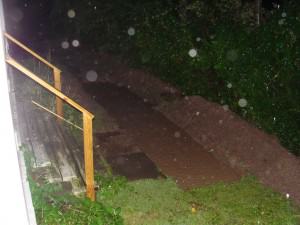
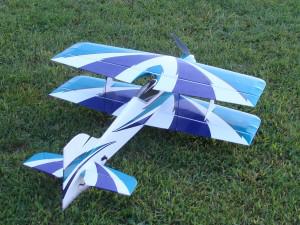
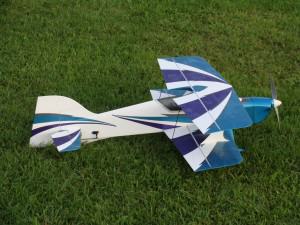
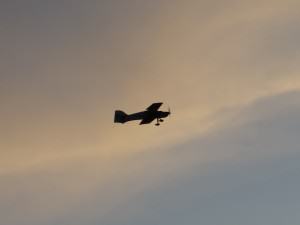
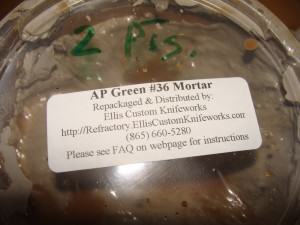
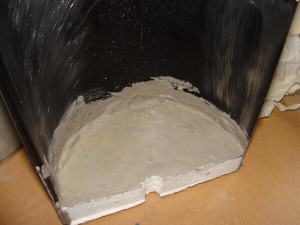
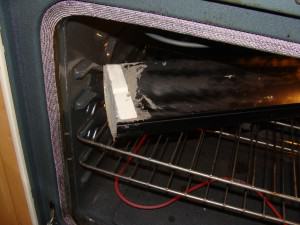
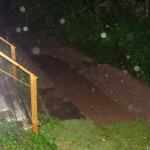
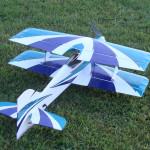
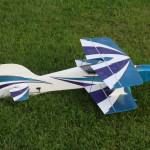
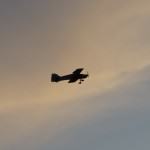
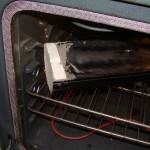
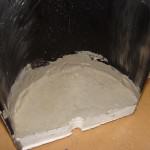
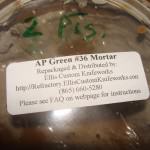
5 responses to Reactor Biplane, Copper Vapor Laser and ‘The Sidewalk Project’
Honestly, leave it to you to murder a perfectly good charged species.
Hey just a reminder that the fall is almost over. 🙂 How’s that sidewalk coming along? Yeah, nothing is ever free, pay for it now or pay for it later. Then again, our kids, kids are still going to be picking up the tab from all the stimulus, whats an extra couple thousand. hehehe
Did you run that oven through a milling machine and mate it up right? Any power put to it yet?
Man, 2.4 sounds like a lot of good can come from it. Additionally, i’ve been looking at the Hitec Aurora 9 lately, just dreaming of course, but wouldn’t mind the radio, to store all of the planes I have and plan to get for the next couple of years. Though the ~$450 price tag is a little steep and the lady will shoot that down quick. I like its style and haven’t had any trouble with Hitec, yet…
That quickie of yours is a pylon plane right? (The NASCAR of the Airplane world. hehehe) Man I bet it’d be a ton of fun to fly fast! Yeah, the bipe is good for aerobatics and just puts’n around I guess. Still would be fun, though lately i’ve been fly’n the YAK-54 a lot in the simulator and am really enamored of its handling. The bipes have some nasty habits that I don’t like. I really don’t know if the simulator gets it totally right though. If I were to buy a small YAK, any recommendations for an EP version? The great planes Electrifly sounds promising!
Hey Mark, the sidewalk could be going better! I haven’t gotten to that point yet, although I did rebuild the front porch steps with new lumber and they’re muchmuch safer, additionally I have a better idea of where the sidewalk should go with the new steps which meet modern specifications (a bit deeper than the old steps)
I haven’t spent much time on the Cu vapor laser, I need to get back into it but mostly have been decompressing after work rather than working on thing. I know the bug will hit again and I’ll make a lot of movement, just need to get to that point.
I just bought that new Airtronics SD10-G after buying the RD8000, the SD-10G is really an ‘ok’ piece of work mechanically, but the programming inside is quite incredible. Every switch is 3 positions(except one spring loaded), they’re all assignable, and there are so many programming posibilities and features you could run anything on it. Airtronics really built something special with this radio and I expect I’ll be running it until it dies like I did my 9CHP from Futaba. I’ve heard the new Hitech has built in telemetry, that’s really tempting, being a numbers and values kind of guy. I wish they’d mash the SD10-G and the telemetry together, then I’d be in heaven. It’s obviously the way radios are going. In another 10 years when I buy yet another new radio, it’ll be totally amazing. I fully expect a full HDTV video downlink to be built into the thing too!
The sidewalk could be going better, I never finished it, just couldn’t get the willpower to destroy my body for a week. Stuffs a pain with the arthritis 😛 I haven’t done much with the CV Laser either, I did get the halves together and some heat into it, up to about 600Deg F stable on the temp controller. The halves are not smooth so I need to work on that, a lot of heat escapes between them, not to mention the oven weighs a ton, but I guess that’s to be expected with steel and ceramic refractories and such!
I upgraded my radio again. I’d seen a lot of good thing about the Airtronics SD-10G, and also already had a couple of Rx’s for Airtronics 2.4Ghz so I bought the SD-10G, it’s an awesome radio, tons of programmability and other features, but no support for telemetry 🙁 Maybe I’ll sell it eventually, but I want to feel an Aurora first and see if it feels as good as the SD-10G. A few of my flying buddies who are quite a bit more advanced fliers than myself have held and explored the radio and liked it alot, one of them flew the Reactor bipe on Saturday and says the radio feels really fast. It is, one of the main reason it gets very good reviews 😀
The quickie is a pylon plane yeah, I need to get that new tuned pipe for the webra motor and get that thing back up and running, looking forward to some insanity 😀 The Reactor bipe has been REALLY great actually, it has a ton of power and doesn’t seem to have the bad tendancies I’ve seen in some bipes (tip stalls, etc) it actually slows down really well and will float in and do all the 3D stuff as well. The same guy that flew my SD-10G radio this weekend was doing it on the Reactor and he put it through his paces. He flies a 35% YAK and some others but was considering getting a Reactor bipe to go with his little electric Trojan.
I’ve been really impressed with the 2.4 Ghz radios so far, the range has been great (it’s up to 2.5 miles on the 10G) and I haven’t had any glitches or weirdness. I didn’t have to do any real complicated antenna routing either. I place one horizontal and one vertical and it works great. Granted when my Futaba 9CHP was working properly I didn’t have any problems in PCM mode either.
I don’t know anything about the electrifly YAKs good or bad, you might one to check over at RCGroups or RC Universe for reviews and that sort of thing. The Reactor Bipe EP gets a lot of good reviews, I just bought it on a whim at a local hobby shop, but I guess I lucked out 😀
Jon,
Its great to see you’ve made some progress on projects! I assume you’ve put some time in on your sidewalk and its no longer a mudd’n hole.
That CVL looks promising, do you have any details on the pictures you’ve included? It looks like you’ve got a PVC tube, as a form and have a refractory end disk?
Man, that plane looks good. I’m jealous, though i’m sure i’d need to buy a bunch of electric stuff (charger,lipo’s, new 2.4 ghz, 10chn radio heheh) to get it up and running! Do you have any video of it fly’n? Are you planning on upgrading any of its parts, aside for the servos. Namely throwing a new more powerful motor in it?
Hallo Xen Onion(don’t kill me lol) (normal readers, it’s Xenon Ion), actually the sidewalk is lacking, unfortunately, I need to finish digging, put in forms, leveled, and pour in the gravel, etc.. ah well. It’ll be done for winter. I am going to go ahead and claim the $7500 ‘credit’ for the 2008 first homebuyers dealy. It’s basically an interest free loan as it will have to be paid back and federal income tax returns for the next 15 years (!!!! LOL)
The PVC was use as a form to press the insulating wool (ceramic wool) into place against the steel form. This had positive and negative effects. The steel expanded and contracted quite a bit in the oven and the refractory ceramic mortar broke free of the steel. Positive, adding more refractory ceramic solved the problem, so all okay there. I’m having some problems mating the halves because the metal warped and now the two halves don’t close properly!!! I’m going to talk to Ollie, a guy who knows more about this stuff than me by a bit, and see what his solution might be to mate the halves smoothly.
The plane is awesome, you could fly it on a 4 channel 72Mhz system so forget all that upgrading garbage that people spout. It flies on a 72Mhz 7 channel system fine (loaned airtronics). The power system could use more, but it’s geared more towards 3D type flying and not speed, I knew when buying a biplane it wasn’t about the speed. That’s why I still plan to convert the Viper Quickie 500 to electric eventually, for the speed 🙂
Leave a reply to Reactor Biplane, Copper Vapor Laser and ‘The Sidewalk Project’